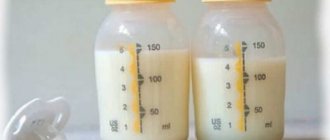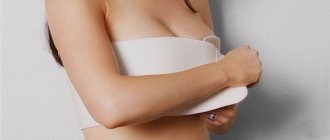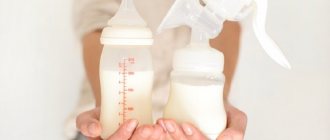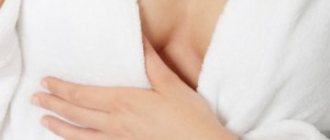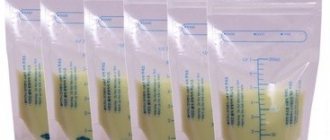There are times when a person cannot eat on his own. But you won’t be able to stay on a drip all the time. Then it is important to pay attention to special medical equipment that will help you get nutrients without pain.
The editors of the YaNashla website have prepared for you a rating of the best syringes for enteral nutrition for 2021.
Why is enteral nutrition needed?
If a person is unable or unable to eat food in the usual way, which happens with some diseases, doctors prescribe enteral nutrition. This is unfamiliar to an inexperienced person, which causes fear, but there is nothing wrong with it. Moreover, in some cases this process takes a short period of time, and everything happens in the hospital under the strict supervision of a doctor. But it happens that even after discharge a person needs to be fed in this way for some time. In addition, there are often cases when, due to illness, a patient permanently switches to this method of delivering nutrients to the body.
Also, we must not forget that there are three ways to deliver food to the body, and each is different:
- The tube is inserted into the nostril and reaches directly to the abdomen;
- The tube goes through the abdominal wall directly into the stomach;
- The last method differs from the previous one only in that instead of the stomach, the tube goes directly to the intestines.
When feeding through the mouth is not possible, a feeding tube will deliver the correct substances to the body. In addition, thanks to the enteral syringe, it is possible to administer healing fluids or medications that are necessary for a person.
Syringes for enteral nutrition with Luer Lock tip
SFM Hospital Products
Disposable three-component syringe with a volume of 50 ml for organizing feeding through a tube and administering medications. It has a central location of the Luer Lock type nozzle, which ensures reliable docking with the ports. The transparent cylinder is made of latex-free polypropylene. It has easy to read, clear graduations. The piston slides easily, without friction or jerking. The double locking ring prevents loss of liquid or nutritional mixture. The product is disposable and sterile.
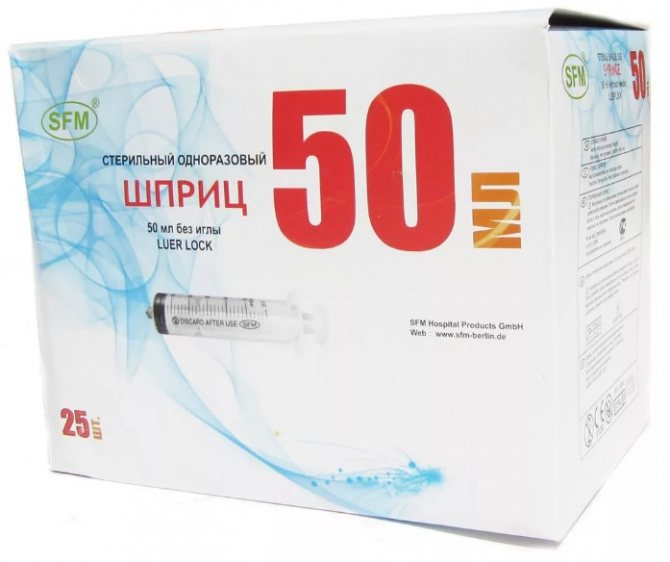
Cost - from 90 rubles.
SFM Hospital Products syringe
Advantages:
- clear graduation;
- no jerking when introducing liquids or mixtures;
- the possibility of the piston jumping out is excluded.
Flaws:
- small volume;
- Not suitable for all catheters.
BBraun Omnifix Enteral
Three-piece syringe for enteral feeding and drug administration with a volume of 50 ml. All parts of the product are made of polymer without natural latex. The most noticeable feature of this product is the purple painted piston. In combination with a clear contrast scale, it makes it possible to quickly and accurately determine the injected volume. The cannula is located in the center. The Luer Lock mount is only suitable for connection to inverted ports or Y-ports. Single use product.
Cost - from 145 rubles.
syringe BBraun Omnifix Enteral
Advantages:
- transparent cylinder;
- clear contrast scale;
- graduation up to 60 ml;
- smooth ride;
- tight fixation thanks to Luer Lock fastening;
- additional sealing rings on the piston.
Flaws:
- small volume;
- connects to only certain types of ports.
Is there a complication
Unfortunately, enteral nutrition also has disadvantages that cause various complications:
- Often, with constant consumption of such food, a person develops diarrhea or constipation, of course, this can be treated, but it is still unpleasant;
- Occasionally, abdominal pain or bloating occurs;
- In some cases, the skin around the place where the tube is installed begins to become rough;
- The stoma becomes infected or breaks out;
- It is not uncommon for a person to have elevated blood sugar due to enteral nutrition;
- Attacks of nausea and vomiting;
- Often the feeding tube becomes clogged or moves to the other side, which causes discomfort.
It is also not recommended to subject a person to enteral nutrition if they have gastroesophageal reflux. Because when eating food, there is a high probability of vomiting.
Proper preparation for enteral nutrition
It is important to understand that not all users are fed in a hospital, so it is important to follow some rules:
- The first thing a person should do is wash their hands thoroughly.
- Next, it is important to decide on the feeding method. Because it depends on the type of auxiliary equipment used. For example, you may need a syringe, measuring cup, pump, special stand, etc.
- It is best to use a special solution that contains the necessary vitamins, minerals, carbohydrates, proteins, etc. This will help the body better absorb food and release the necessary energy for various processes.
- When feeding is carried out, lying down is prohibited; the procedure is carried out only in an upright position.
- To avoid any complications, it is important to ensure that the tube is in the correct position. Only after this can nutrients be supplied. If a person has a gastrostomy, then it is important to extract a small amount of gastric juice using a syringe, and only then feed the person. To more accurately measure the length of the tube, it is recommended to use a ruler. If the user notices that the tube is too deep and there is no gastric juice, then the element is in the wrong place;
- To rinse the tube, use a special syringe. It is imperative to carry out this procedure so that no harmful microorganisms get inside.
What are the nutrient delivery methods?
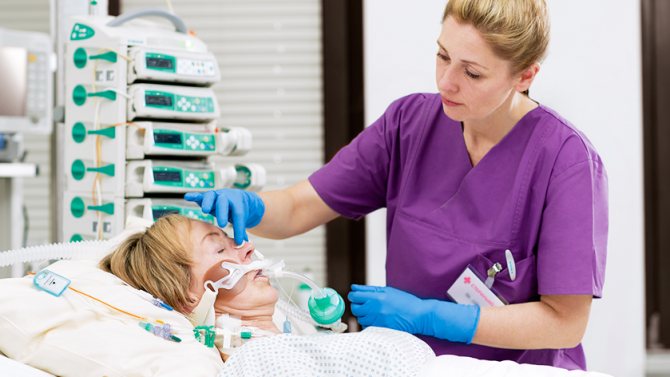
It is important to understand that food can be delivered to the body in different ways. It all depends on the current condition of the patient. The tube can be inserted by either a healthcare professional or a trained family member. Additionally, people who live alone and require this procedure can receive a free course at a nearby hospital. They will tell you in detail about the correct ways to introduce nutrients.
Syringe method
In this case, the feeding tube is bent in one position or pinched. A special syringe is attached to it, which differs in size. After this, you should pour in (and slowly) the nutrient solution. Next, the tube begins to open, and the syringe must be at a level above the body, otherwise nothing will go inside. All movement of the solution inside the tube is carried out under the influence of gravity.
After finishing feeding, the tube must be thoroughly washed with water, this will prevent possible clogging. After this, the tube is clamped again and the syringe is slowly withdrawn. Next, you need to secure the tube to your body.
It is important to understand that if a person uses this method of feeding, he will need to carry out several procedures per day. This method is also called bolus feeding, which is useful to know.
IV
The simplest method, which is used in many hospitals. The bag with the solution is hung in a certain position. The tube that is present in this bag is tightly connected to the nutritional one, and it is important to clamp the latter so that nothing unnecessary gets inside. As soon as both elements are connected, the nutrient part is released and the solution begins to flow downwards. A special clamp is used to regulate the flow. After feeding, it is important to rinse the tube; to do this, you again need to use a syringe.
Pump method
This method differs minimally from the previous version, the only thing is that the tubes are connected to an electronic pump. The device is programmed in advance for a specific session, so the feed is carried out automatically without any outside intervention.
For convenience, there is a continuous diet, which makes it possible to provide a person with the necessary elements throughout the day. But there is a faster way, but in this case you will have to feed after a certain period of time.
To keep the tube clean and not clogged, it will be flushed from time to time. The good thing about the pump method is that you can connect a syringe to the device, which will squeeze out the required amount of liquid.
How long does it take to feed?
After a person has become familiar with the methods of delivering nutrients, it is important for him to know how long a particular method takes. This is easy to do, for example:
- Bolus feeding (using a syringe) takes a person only 15-20 minutes, which makes it one of the fastest;
- Dropper in standard mode – 1-2 hours;
- The pumping method depends on the method used, so if a continuous supply is carried out, it will take from 8 to 12 hours.
Does eating this way cause pain?
Most people do not know whether nutrition is painful for a person. The answer is simple: no, the patient does not feel painful pressure or impact. But at times, stomach upset may occur; to avoid this, you only need to follow two steps:
- Do not move to the side or lean back, but remain in a horizontal position for half an hour to an hour after the introduction of nutrients;
- No exertion after feeding is allowed, as this can cause complications.
What to do after feeding
As soon as a person has finished eating in one of the described ways, it is important to complete several points:
- You should wash your hands immediately. After which the stoma is cleaned and thoroughly dried;
- Also, we must not forget about the feeding tube, which is also washed under warm water with special detergents. At the same time, it should dry in the open air. If a pump is used, the manufacturer's recommendations must be followed.
Even though a person is unable to chew or swallow through the mouth, it is still necessary to take good care of the teeth, gums and cavities. Therefore, you should brush your teeth every day. Of course, this is only done if there is a doctor's permission.
The largest companies producing products for gastroenterology
MIM LLC is a domestic enterprise located in Tyumen for the production of single-use medical devices. Founded in 1991. He is one of the leaders in his field. Since 2016, the production of syringes began. The company annually participates in international exhibitions and improves its technologies. All this is done to improve the qualifications of personnel and the quality of products.
Braun is a German company producing medical products for hospitals, organizing surgical processes, patient care, etc. Its history began in 1839. Since then, the company has been supplying its products to many countries around the world, and since the 80s of the 20th century. and to Russia. In 2001, a subsidiary was created in Russia, which currently has its branches in 50 regions of the country.
Apexmed International BV is a company engaged in the production of a wide range of medical equipment, equipment and materials. Its headquarters are located in Amsterdam in the Netherlands. All manufactured products are of high quality and are certified accordingly. Innovative technologies are used in its production, and its use makes the treatment process more effective.
KDM (KD Medical GmbH Hospital Products) is a German company producing single-use medical products. For more than 15 years, KDM has been cooperating with more than 60 countries, supplying them with reliable and high-quality products. All manufactured medical products comply with international quality standards.
SFM Hospital Products GmbH is a supplier company located in Germany. The main direction of its activity is the production and trade of medical consumables. The company was founded in 1997 and since then has become a reliable and trusted supplier in many countries of Europe, the CIS and Russia.
Vogt Medical Vertrieb GmbH is a German company that began its history in 1991. Since then, it has been one of the leading suppliers of disposable medical products to many countries around the world.
Rating of the best foreign models
Omnifix With Luer Lock Tip, 50 ml
Despite the one-time use, this model is suitable for various applications. Including enteral nutrition. There is a convenient centered tip that will allow you to secure the tube tightly. The color of the piston is purple, there is a clear graduated scale that will allow you to determine the amount of volume injected into the patient.
The average cost is 145 rubles.
Omnifix With Luer Lock Tip, 50 ml
Advantages:
- Qualitative scale;
- Convenient tip;
- Piston color;
- Quick connection.
Flaws:
- Disposable, which many users may not like;
- High price.
ERENLER MEDIKAL O-0280
A good option made in Turkey, which is characterized by efficiency and ease of use. The maximum volume is 60 ml, which is a good result. The external design does not differ from the previous copy, the only thing is that here the piston has a bright white color. The tip is located in the middle, which is a convenient solution. In addition, connection takes almost no time, which is an advantage.
The cost is specified when ordering.
ERENLER MEDIKAL O-0280
Advantages:
- Good design;
- Good location of the tip;
- Convenience;
- Efficiency.
Flaws:
- Sold in large quantities only.
Samtronic SERISAM
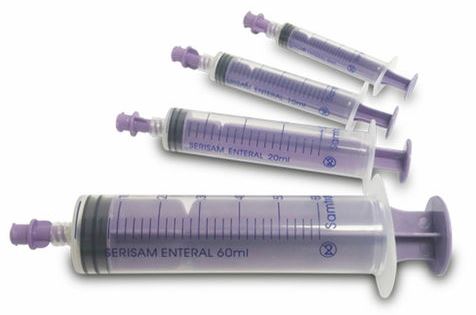
A multifunctional product that is easy to use. The capacity is 50 ml, which is a good result. The piston works smoothly and quickly. There is a convenient separation of the scales, and they will be clearly visible regardless of the color of the liquid. The tip is located in the middle. Connection takes no time. The only drawback is that the product is sold in large quantities, but if long-term treatment is planned, then it is more profitable to order them.
Price when ordering.
Samtronic SERISAM
Advantages:
- High quality model;
- Convenient use;
- Good scale designation;
- Suitable for long-term treatment;
- Has the necessary certificates.
Flaws:
- Ordered in bulk.
Medesign MED1000920
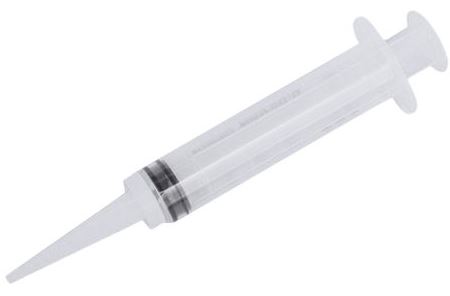
A high-quality model that is suitable for adults and premature babies. If a person does not know how to use such products, they should consult the doctor for instructions. The product is distinguished by a durable body; special plastic was used for its manufacture, which does not react with medicinal drugs. The peculiarity of this product is the presence of an elongated tip.
The cost is specified when ordering.
Medesign MED1000920
Advantages:
- Convenient shape;
- Does not deteriorate for a long time;
- Easy to use;
- High-quality material;
- Nice tip.
Flaws:
- Not found.
OMNIFIX ENTERAL
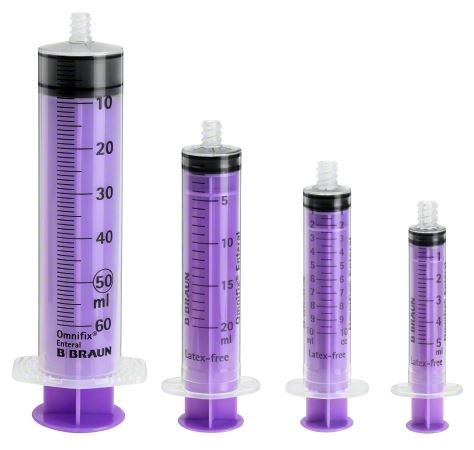
A popular German-made product, which is distinguished by a wide selection of syringes by capacity. The product has a high-quality central tip, which ensures a quick and tight connection with the feeding tube. For the manufacture of the product, medical silicone was used, which is safe and inert to many substances. The color of the piston is purple, which is a distinctive feature of this model.
The average cost is 150 rubles per 60 ml.
OMNIFIX ENTERAL
Advantages:
- Attractive appearance;
- Convenient connection to the handset;
- Quick introduction;
- Maximum comfort, even if the patient administers the solution independently;
- German quality.
Flaws:
- Not found.
Breast milk... not from the breast. Ways to feed children on special occasions
Alas, a mother does not always have the opportunity to breastfeed her baby. Therefore, throughout human history, there have been a variety of ways to supplement infants. Of course, this is not as easy and pleasant as the natural way, but what you have to do due to circumstances... What opportunities do mothers have who strive to give their child the best from the first days of his birth - even if the baby is not yet healthy or strong enough for breastfeeding?
Bottle feeding
This may seem strange to us, but feeding from a bottle with a nipple became popular not so long ago, pushing other methods of supplementary feeding to only about a hundred years ago. In addition to this method, there are others - both time-tested and very recent inventions. But bottle feeding still dominates our society, so Western lactation specialist Dee Kassing suggests changing it a little so that it brings minimal problems.
For whom: for children of working mothers; for children who require supplementary feeding; if the mother does not have enough milk.
What are the advantages: this method requires a minimum of effort, the mother does not need to learn anything complicated.
What are the disadvantages: Dee Kassing’s advice to keep the child in a sitting position for a long time inspires some concern. In addition, the very factor of the sensation of foreign material in the baby’s mouth does not go away, and all the inconveniences associated with sterilizing nipples and bottles remain. If the baby has been breastfed for some time, he may refuse to suck the bottle.
How to do it: To reduce the risk of breastfeeding in favor of a bottle and reduce the likelihood of improper latching leading to cracked nipples, Dee Kassing suggests paying attention to the following points:
- careful selection of accessories. The bottle should be straight (no waist). The bottle nipple should not have a wide base (a wide one causes the baby to squeeze his gums tightly, while a narrow nipple allows the baby to keep his mouth comfortably open). The pacifier should be round (according to ultrasound studies, the closest thing to sucking on the mother's nipple is an old-fashioned round pacifier, and not an orthodontic one, as is commonly believed). In addition, the pacifier should be slow flow (sucking on a full bottle should take 15 to 20 minutes) and as soft as possible (sucking on anything harder than breasts leads to orthodontic problems, according to Western research).
- the feeding technique itself. Di Kassing believes that if possible, before giving the baby a bottle, you should definitely breastfeed the baby. Then place the baby on your lap so that the upper part of his body is raised, in fact he should sit with support on his back and neck. The bottle should be held horizontally and the nipple should be given into a wide open mouth. The nipple is given to the baby entirely, up to the ring of the bottle, and goes deep into the mouth, just like a mother’s nipple does. When the entire nipple is in the mouth, the top edge of the bottle is raised so that air does not collect near the nipple. Towards the end of feeding, the baby is tilted back so that the bottle can be lifted to effectively suck out the milk.
Spoon feeding
This is the next most popular method, which usually immediately comes to mind for those who find out that for some reason they should not bottle feed their child.
For whom: for premature babies with a weak sucking reflex; for children who refuse breastfeeding; for babies who refuse to suck a bottle in their mother’s absence.
What are the advantages: this is a simple method that requires a minimum of accessories. After it, children do not refuse breastfeeding. If the child is very sick, for example with a respiratory infection, then spoon feeding is sometimes the most appropriate way.
What are the disadvantages: labor-intensive and time-consuming, so sometimes spoon feeding is stopped before the child has eaten his fill. In addition, the baby may spill some of the milk.
How it's done: feeding a baby with a teaspoon is almost no different from feeding an already grown child. An important nuance: you should try to pour milk or formula into the cheek, then the child will be more inclined to swallow the food rather than push it out with his tongue.
Soft spoon
This is a variation of the previous method, which is carried out using a special accessory from. In general, this company has a number of specific accessories specifically for those situations when regular breastfeeding is difficult, but the mother still wants to make an effort to establish breastfeeding.
For whom: indications for use are the same as for a spoon.
What are the advantages: one of the best methods in terms of simplicity and effectiveness. You can feed from a soft spoon both immediately after birth (including a premature baby) and an already grown baby, whom the mother does not want to accustom to a bottle.
What are the disadvantages: the relatively high price of the device.
How it's done: a soft spoon is actually a bottle combined with a spoon. Expressed milk or other liquid nutrition is poured into the graduated “handle.” The spoon itself is made of soft silicone, which does not irritate the baby’s lips. Nutrition begins to flow into the spoon after the person feeding the baby presses the special “cheeks” on the sides. This makes it easy to dose out food for your baby. The child usually does not experience any refusal or irritation, since the soft spoon - unlike a bottle - does not try to replace the mother's breast, imitating its shape.
Nasogastric (stomach) tube
All mothers of low-weight and seriously ill children are familiar with the method of feeding through a thin tube inserted into the stomach through the nose. Often such babies are kept separately from their mothers for constant medical observation, and getting rid of the tube is already considered a very serious step towards recovery.
Who it's for: Babies less than 30-32 weeks gestational age and too sick for other feeding options.
What are the advantages: children do not get used to this method of feeding. The method is fast and safe.
What are the disadvantages: the method is carried out only by doctors, at least under strict medical supervision.
How this is done: the probe is inserted by an experienced physician and can be left in place for 1-2 days. If necessary, feeding is carried out even every 15-20 minutes. The basic principles of feeding a child through a tube are caution and gradualness.
It is best if it is possible to feed the baby with colostrum or his mother’s milk. If this is not an option, your second choice is pasteurized donor milk. And only in the third place is the mixture used.
According to medical observations, if a mother allows her baby to suck her finger (previously washed cleanly, with the pad facing up) during tube feeding, this stimulates the baby’s digestive tract and promotes weight gain. Lightly tickle your baby's lips with your finger until he opens his mouth enough to allow you to give him your finger. If the child is very sleepy, you can very gently insert your finger into the mouth. Usually even a sleeping baby begins to suck. If the lower lip is curled in, gently press on your baby's chin to straighten it, as if he were sucking properly. The baby's tongue should be straight and extended forward under the finger. Usually the child sucks his finger deep enough, don’t let this scare you.
Cup feeding
Cup feeding is also a very common alternative to bottle feeding. Many maternity hospitals and clinics abroad and in Russia that support the Baby-Friendly Hospital initiative use small cups or special sippy cups made of medical-grade polypropylene to feed babies.
For whom: for premature and low birth weight babies, until they are not mature enough for exclusive breastfeeding; for babies with cleft lip and palate; for babies who refuse breastfeeding; for children who need supplementary feeding.
What are the advantages: cups are easiest to handle between feedings (and the same Medela produces special sterile sippy cups with a rounded edge and a measuring scale). Cup feeding babies takes less time than bottle feeding. Research at the Kansas Medical Center (USA) has shown that cup feeding results in less regurgitation and colic, and better weight gain. This type of feeding requires little energy expenditure and stimulates proper movements of the tongue and jaw. At the same time, nothing gets into the baby’s mouth except milk!
What are the disadvantages: the method has a contraindication - it cannot be used by a newborn with a tendency to aspiration (weak swallowing reflex, general lethargy). There is no risk of choking unless milk is poured into the mouth - which is poor cup feeding technique! In full-term and sometimes premature babies, milk may leak from the mouth.
How it's done: Cup feeding is usually the next step for a premature baby after tube feeding. For the first time, such feedings are tried after the child has begun to tolerate tube feedings at intervals of 2-3 hours. After three successful cup feedings in a row, the nasogastric tube can be removed and the baby can continue to be fed only from a cup.
As babies develop, they first lap milk from a cup, then pull it as their sucking, swallowing and breathing reflexes become more mature.
It is recommended to swaddle the baby so that he cannot wet himself due to accidental movement of the hand, and place him on his knees, raising his upper body - half-sitting or half-lying. You can put something under his chin to keep his clothes dry. A sleepy baby should not be fed!
Fill the cup at least halfway with expressed milk or formula. Bring the edge of the cup to the outer corners of your upper lip, gently resting it on your lower lip. Tilt the cup so that the milk touches the baby's lips. Usually at this moment the baby perks up, grimaces and tries to suck in the milk. The first time you try, it may take a few minutes. Do not pour milk into your baby's mouth! A low birth weight baby takes milk into his mouth, helping with his tongue, and a full-term baby tries to suck.
Give your baby time to swallow. Stop from time to time, giving the opportunity to burp air. Keep the cup in one position throughout the feeding - that is, do not move it while your baby is resting, and keep the milk level constant relative to the lower lip. Allow your baby to regulate feeding, but in any case, a newborn baby should be fed no longer than 30 minutes, otherwise he will get tired.
As soon as the baby is full, he will close his mouth and stop expressing interest in milk. It’s not scary if the baby hasn’t eaten the required amount - they will either eat it next time or get hungry earlier. To make sure that the baby is not starving, you need to calculate the food intake for the day, and not for each feeding.
Syringe
Some mothers use a disposable syringe with the needle removed for supplemental feeding.
For whom: for children who need supplementary feeding without using a bottle.
What are the advantages: if the syringe is in sterile packaging, then you can simply use it once and then throw it away without wasting time on processing. Milk or formula can be easily squirted into the baby's mouth.
What are the disadvantages: it will still take quite a lot of time to provide a significant amount of supplementary feeding. Some children get used to sucking a syringe and then latch onto the breast incorrectly.
How to do this: take a syringe with a volume of at least 5 ml (preferably 10 ml) and, without putting on a needle, draw in a certain amount of supplementary feeding through the tip. Insert the tip into the baby's mouth (it is important that he is not sleepy!) and smoothly, gradually inject the supplementary food.
System for supplementary feeding at the breast (supplementary feeding system, SNS)
The system for supplementary feeding at the breast is a container into which supplementary feeding is poured and from where a thin long tube comes out. The uniqueness of the method is that the baby can receive nutrition from this tube directly while sucking on the breast, and thus maintains interest in sucking, even if there is no milk at all in the breast itself. In the West, this method is actively used in the adoption of very young children, if the adoptive mother wants to breastfeed, and allows lactation to be established even in those women who have not themselves been pregnant! You can make a system for supplementary feeding at the breast yourself by taking the thinnest probe and inserting it through the hole in the nipple into a bottle with food; Or you can buy ready-made. It is not cheap, but it is much more profitable than switching a child to formula.
For whom: For children who do not have enough breast milk or who cannot breastfeed effectively; for babies who arch at the breast as soon as the milk flow slows.
What are the advantages: it is more convenient and more physiological than any other method of supplementary feeding, since the baby is at the breast and sucks on it. The baby learns proper sucking. The breasts are stimulated to produce milk even if there is no milk there at the moment. The risk of breast refusal is reduced. The psychological component of breastfeeding is completely preserved, which is difficult to maintain with other methods of supplementary feeding.
What are the disadvantages: the child must, in principle, take the breast (not suitable for children with persistent breast refusal). There is some difficulty in processing the tubes: they cannot be boiled, they must be thoroughly rinsed from the inside with hot water and then hung to dry. The relactation time is unpredictable: for some, a few days are enough to achieve a good effect, while others feed with this system for about two months before a sharp improvement occurs after the absence of a visible effect.
How this is done: the required amount of supplementary feeding is collected in a container either before feeding or right during it. You can first simply put the baby to the breast and then carefully insert the tube into the corner of the mouth at a time convenient for the mother (for example, after he has already emptied both breasts), or you can put the baby to the breast with the tube already attached next to the nipple. The tube is carefully inserted into the corner of the mouth, inward and slightly upward, towards the sky. You can secure the tube to your chest with adhesive tape, but this is not necessary. Sometimes mom has to hold the tube with her finger, because some babies gradually push it out with their tongue.
When the tube is well positioned, liquid flows through it quickly enough. To increase or decrease the flow, you need to raise or lower the feeding container. When the supplementary feeding system is working correctly, the baby will suck 30 ml of supplementation in about 15 minutes. It is better to use the system at every feeding, since lactation will be more effectively supported by 8 additional feedings per day, 30 ml per feeding, than two large supplements, 120 ml each.
Habermann sippy cup (sippy cup for children with special needs)
This is a specific product that helps mothers of babies who are not able to suck effectively themselves.
For whom: for children with cleft lip and palate; with Pierre-Robin syndrome; for those who, due to neurological problems, cannot suck milk from their mother's breast.
What are the advantages: usually such children are fed either from a nipple with a large hole, or from a tube, or from a special obturator. The Haberman sippy cup is much more convenient and provides the ability to regulate the flow of milk, thereby reducing the likelihood of swallowing excess air. When using a sippy cup, the baby does not actually suck out the milk, but laps it, and the movements of his tongue are very similar to those made by a child extracting milk from a woman’s breast. Therefore, if the baby’s deficiency can be eliminated with treatment or surgery, then after using the sippy cup it is easier to switch to breastfeeding.
What are the disadvantages: The Haberman sippy cup is relatively expensive.
How it is done: before feeding, milk is drawn into the bottle, the lower part of the nipple is compressed to release air, and the sippy cup is filled with milk by pressing the wide part of the tip, like a pipette. When the tip is full, you can start feeding your baby.
The flow of milk is regulated by simply turning the cup. There are three divisions on the tip. It is better to start feeding so that the middle division “looks” at the baby’s nose, and then, depending on the situation, you can increase or decrease the flow of milk.
The point of the Haberman sippy cup design is that the baby does not have to try to create the pressure that is necessary to suck milk from the breast or a large bottle. If necessary, the person feeding the baby can help by squeezing the wide part of the tip.
Rating of the best domestic options
MIM Syringe Janet 150 ml
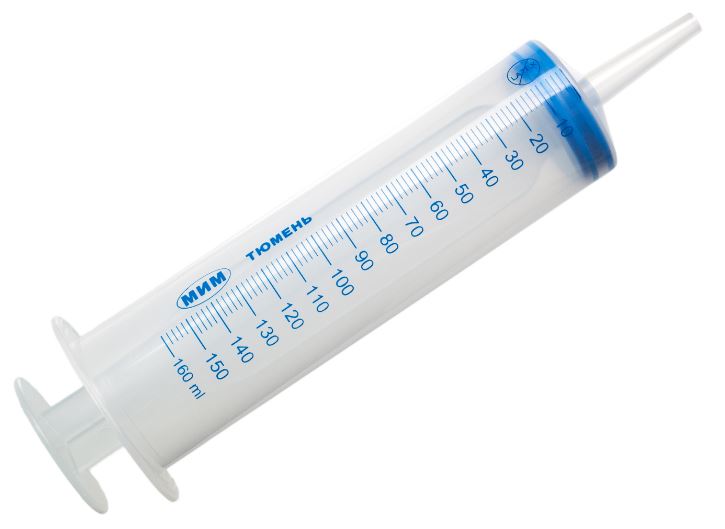
One of the best Russian options, which is suitable for washing the patient’s cavities, as well as providing enteral nutrition. Administration is carried out through a catheter probe, which is a good solution. In addition, the syringe can be used for various intravenous infusions. The graduation value is 1.0 ml, the scale is clearly visible, so no problems will arise.
Sold in all pharmacies at a price: from 86 rubles.
MIM Syringe Janet 150 ml
Advantages:
- Convenient use;
- Qualitative scale;
- Good workmanship material;
- Fast connection.
Flaws:
- Not found.
Syringe for rinsing cavities, 150 ml
A high-quality three-component option that is suitable for most patients. The product has a large support for the thumb and index finger. There is a universal tip that will fit most feeding tubes. There is also a protective cap that prevents the penetration of various bacteria. Transparent PVC was used for production.
The average cost is 68 rubles.
Syringe for rinsing cavities, 150 ml
Advantages:
- Thumb rests;
- Reliable protective cap;
- Material of manufacture;
- Optimal price;
- Does not deteriorate from long-term storage.
Flaws:
- Not detected.
KB Medical Group ESX
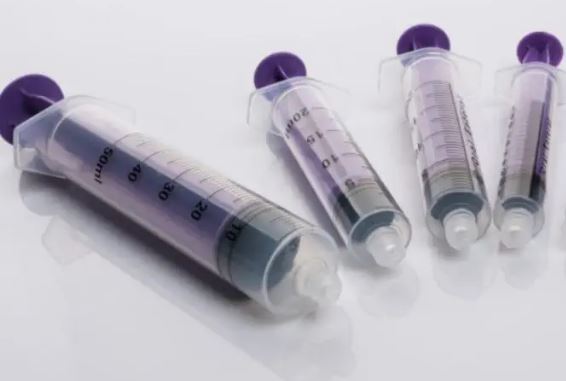
A good product that is suitable for enteral feeding of patients. The product is distinguished by high-quality materials that are completely safe for humans. There is a convenient central tip that connects to various tubes. The plungers are latex-free and made from synthetic rubber.
The price is specified when ordering.
KB Medical Group ESX
Advantages:
- High-quality assembly;
- Convenience;
- Good stops;
- Efficiency.
Flaws:
- Not found.
GBUK Group ELDISO, EISO series

A reusable syringe in the manufacture of which special materials were used. The product is excellent for feeding the patient using the bolus method. There is a high-quality silicone ring. Good and clear markings. Can be used up to 80 times, the main thing is to take proper care of it.
Price when ordering.
GBUK Group ELDISO, EISO series
Advantages:
- Reusable;
- High quality manufacturing;
- Convenience;
- Full thread;
- Efficiency.
Flaws:
- Not found.
How to choose a syringe
A high-quality syringe for enteral nutrition will ensure a smooth, jerk-free delivery of the nutritional mixture. When choosing syringes for tube feeding, the following points should be considered:
- It is better to give preference to products from proven and well-known manufacturers who have been producing and supplying medical equipment and consumables for a long time. Currently, more than 2/3 of syringes in pharmacies are produced by foreign companies. The largest domestic and foreign suppliers will be discussed below.
- According to the design, it is better to choose three-component syringes. It is they who ensure smooth running and it is they who provide protection against unexpected removal of the piston and leakage of the mixture;
- The volume is selected depending on the age and needs of the patient;
- It is best to give preference to products with a catheter type tip, because... it fits almost all types of probes. At the same time, the Luer Lock type tip provides a more reliable fastening and eliminates leakage;
- Frequency of use. It is better to use disposable products, because... they are the most hygienic and safe. However, their use is more expensive, especially when organizing feeding for a long period. Reusable syringes are more profitable financially, but require proper processing, which not everyone can do on their own.
- The shelf life for single-use products ranges from 3 to 5 years.





